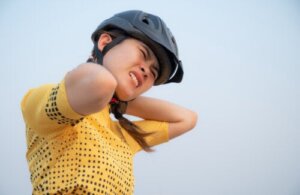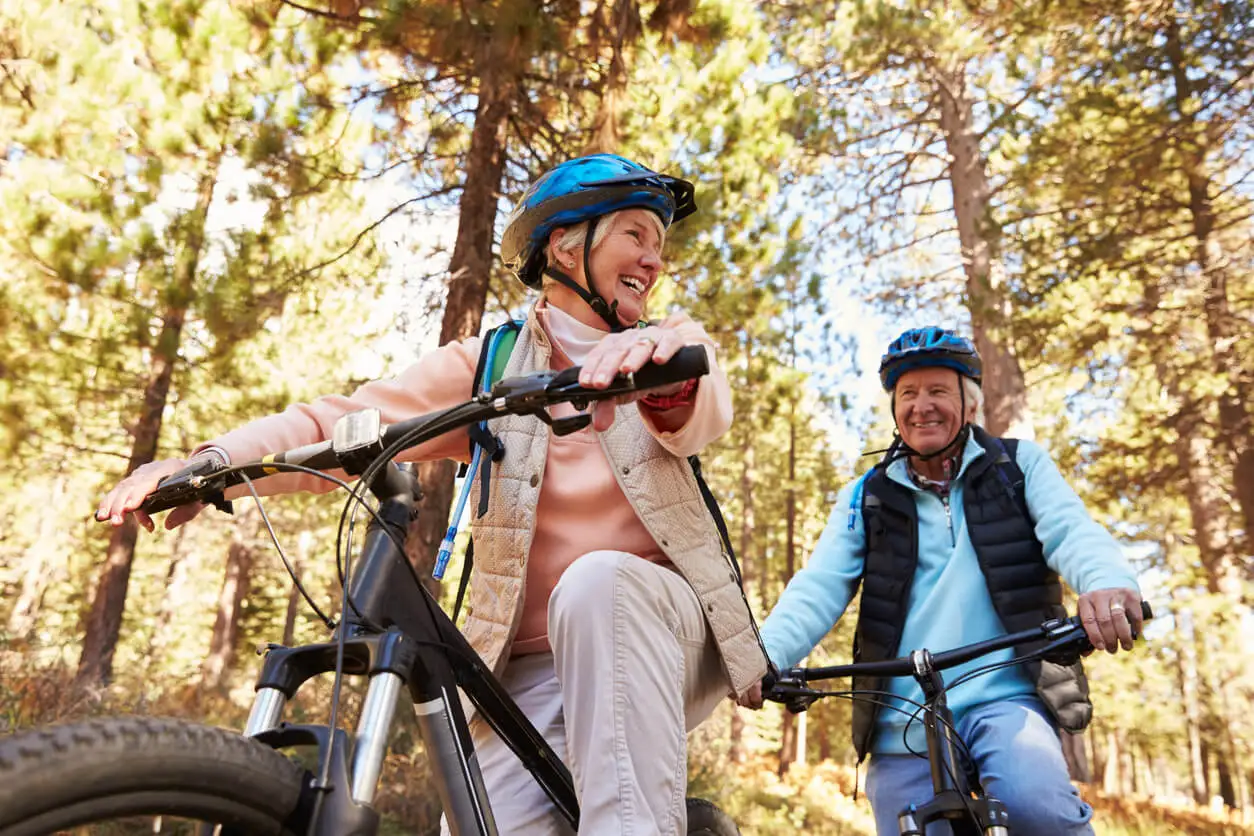How to Avoid Neck Pain When Riding a Bicycle


Reviewed and approved by the nurse Leidy Mora Molina
Riding a bike is pleasurable and provides many health benefits. However, there are also discomforts and injuries that can occur just by pedaling, apart from getting into an accident. Pain in the cervical musculature is one of the most common conditions. In this article, we’ll tell you how you can prevent neck pain when riding a bicycle.
Neck pain usually results from poor posture when cycling. In general, this type of pain affects those who spend a long time pedaling more, as is the case of professional athletes or amateurs who go out for long rides.
In most cases, the discomfort begins after the practice. That’s why sometimes we don’ even realize that the cause of this pain may be our posture on the bike.
What to do about neck pain when riding a bicycle
Broadly speaking, adjusting the bike and equipment properly, as well as adopting a correct posture, can be the solution to neck pain. However, here are the main causes of discomfort and what you can do to avoid them.
According to a study on common cycling injuries and their prevention, proper bike fit is critical for high-performance cycling. Emphasis should be placed on frame size, seat height, front and rear saddle position, saddle angle, reach, and handlebar height.
Neck and back pain is very common and occurs in up to 60% of cyclists.

Body posture is key
Proper posture and the use of the correct technique are critical in any sport when it comes to gaining benefits and avoiding injury. Assuming that the model and fit of the bike are ideal for our physical characteristics, then the rest is up to us.
It’s not only about maintaining the proper posture on the bike, but also in other activities we do every day. A bad posture when spending long hours in front of the computer or doing cleaning work at home can manifest itself when we ride a bicycle.
We think you may also enjoy reading this article: Simple Habits You Can Change to Improve Your Health
Position the handlebars and seat at the right height
If the seat is in the correct position but the handlebars are too low, we’ll have to lean our torso forward and strain our neck to be able to look ahead. This position could cause pain after a prolonged period on the bike.
In such a case, the handlebars should be raised to achieve a good posture. However, the opposite can also be the case – i.e., if the handlebars are too high.
If this happens, we will be forced to stretch our arms too far, which could cause increased strain on the shoulder and neck muscles. Both the seat and handlebars should be the right distance apart.
According to a paper on neck and back pain while cycling, it’s often necessary to alleviate the extended position of the rider by using handlebars with less drop, a shorter stem extension or moving the seat forward. The study also added that the following circumstances contribute to preventing discomfort:
- Change the position of your hands on the handlebars frequently.
- Ride with your elbows unlocked.
- Vary the position of your head.
- Wear padded gloves and had padded handlebars.
- Use wider tires.
Beware of certain types of tires
Tires can also interfere with neck pain. It’s a good idea to find out the ideal type of tires for your bike according to the model and your activity.
Tires are key in cushioning, and this can help you to avoid neck pain. In general, wide wheels – at least 25 millimeters – are recommended for everyday use. However, it’s important to consult a specialist in this case, because it may be different for each particular case.
Pay attention to your equipment to avoid neck pain when riding a bicycle
To begin with, the bicycle itself must be sized to our body. The size of the vehicle is important to ensure the necessary comfort and safety. A specialist will be able to advise you to find the right size and thus avoid pain, not only in the neck, but also in the back and knees.
Your helmet must also be well adjusted. Otherwise, it could affect comfort and force you to make some improper movements. On the other hand, cycling with the neck uncovered in cold weather leaves us exposed. It’s a good option to keep the area warm to prevent muscle stiffness.

Like this article? You may also like to read: How to Improve Circulation in Your Legs During Lockdown
Do complementary exercises
Cycling can also be complemented with other types of exercise, either before or after training:
- Strengthen your muscles: Strength work at the gym can strengthen your muscles, help you to achieve greater resistance and, therefore, contribute to better support your effort when cycling. Strengthening your back, abdomen, and shoulders will also help protect your neck.
- Warm up properly: Taking a few minutes to warm up will allow us to prepare the muscles before the activity, as well as to gain flexibility.
- Stretching: It’s always recommended to stretch the muscles once the activity is over. Very gentle head movements can be performed to relieve tension or prevent pain.
- Massages: These help to relax the area, in addition to being pleasant. Physiotherapy sessions can be a good option for recovery.
Enjoy the road!
It’s possible to avoid neck pain if we take into account some factors. The size of the bike should be adjusted according to the length of your legs, the seat and handlebars have to be at an adequate distance, and don’t forget to pay attention to your posture to avoid tensions in the musculature.
Warm-up and stretching exercises contribute to avoiding discomfort and a better recovery after pedaling. It;s also a good idea to do some training to strengthen the cervical musculature.
You can even do some gentle shoulder and neck movements while pedaling in the calmer stages of your ride. Take these precautions and enjoy your ride!
All cited sources were thoroughly reviewed by our team to ensure their quality, reliability, currency, and validity. The bibliography of this article was considered reliable and of academic or scientific accuracy.
- Mellion MB. Common cycling injuries. Management and prevention. Sports Med. 1991 Jan;11(1):52-70. doi: 10.2165/00007256-199111010-00004. PMID: 2011683. Disponible en: https://pubmed.ncbi.nlm.nih.gov/2011683/
- Mellion MB. Neck and back pain in bicycling. Clin Sports Med. 1994 Jan;13(1):137-64. PMID: 8111848. Disponible en: https://pubmed.ncbi.nlm.nih.gov/8111848/
This text is provided for informational purposes only and does not replace consultation with a professional. If in doubt, consult your specialist.








